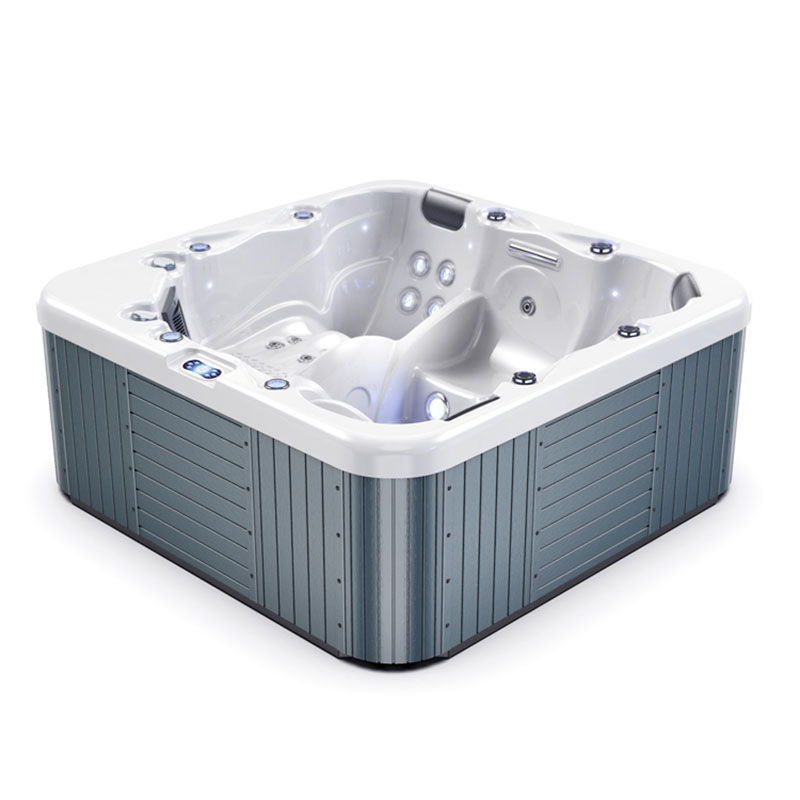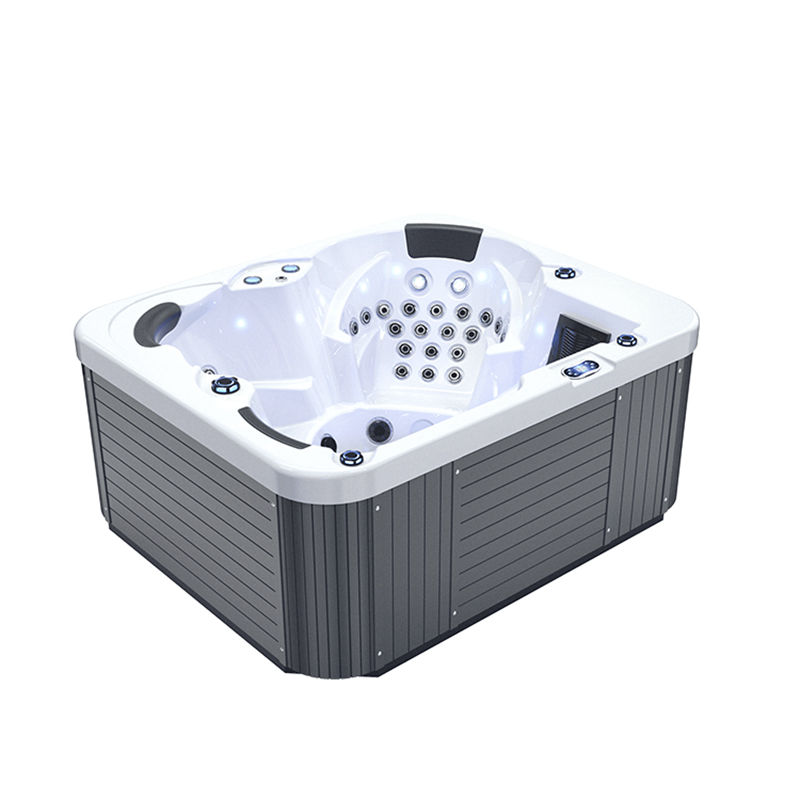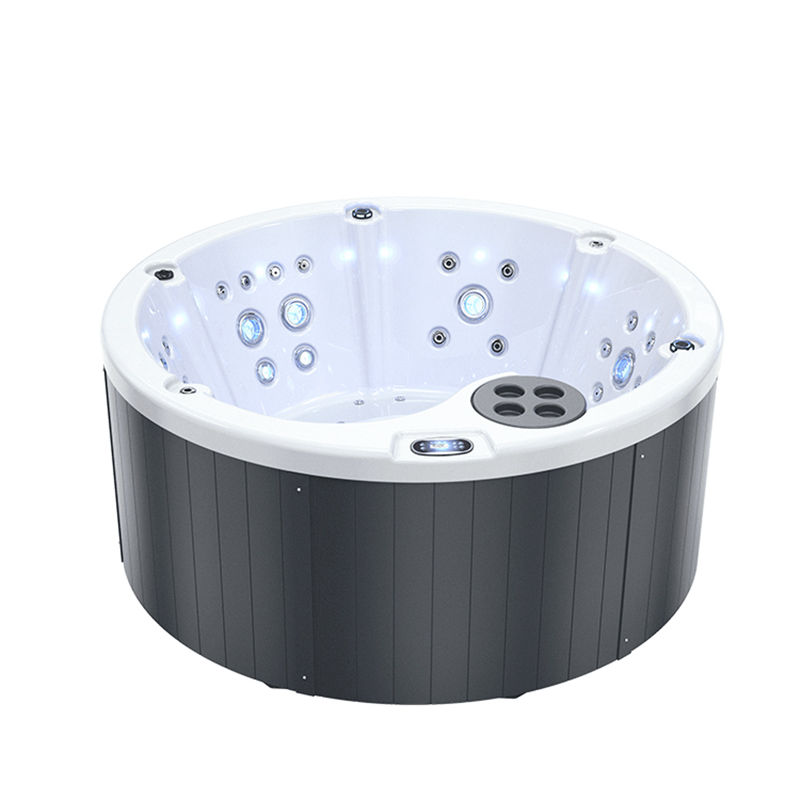Freestanding hot bathtubs have become increasingly popular in home design and personal health care in recent years. Not only does it provide a luxurious space for relaxation, but it has also become a widely used indoor and outdoor facility in modern homes due to its unique design style and diverse installation methods. Although the concept of hot bathtubs has been popular for a long time, many people still don't know much about the characteristics, functions and differences between freestanding hot bathtubs and other types of bathtubs.
This article will systematically popularize the definition, advantages, installation methods, maintenance and usage suggestions of freestanding hot bathtubs to help consumers better understand this home product.

What is a freestanding hot bathtub?
A freestanding hot bathtub is a hot tub that can be independently placed indoors or outdoors without relying on wall or other structural support. Unlike traditional embedded or built-in bathtubs, it does not need to be fixed to the wall, ground or specific frame, but can be placed directly on the ground for use. This bathtub is highly flexible and can be freely arranged according to family space, decoration style and usage needs.
Freestanding bathtub design features
The biggest feature of a freestanding hot bathtub is its 360-degree openness. Since it is not connected to the wall, it usually has a complete exterior design, and its beauty can be seen from all sides of the bathtub. This type of bathtub has a variety of shapes, materials and styles. Common shapes include round, oval, rectangular, etc. Some bathtubs have more complex curve designs. In terms of materials, freestanding bathtubs are often made of acrylic, resin, ceramic, cast iron and other materials, which can not only ensure the insulation effect of hot water, but also provide solid structural support.
Functions and uses of freestanding bathtubs
The main function of freestanding hot bathtubs is to provide hot water massage and hydrotherapy experience to help users relax and relieve muscle tension. Unlike ordinary bathtubs, freestanding hot bathtubs are equipped with equipment such as water pumps, heating devices and massage nozzles, which can achieve massage effects through the circulation of hot water and water flow. Many models are also equipped with additional functions such as LED lighting and Bluetooth speakers to further enhance the comfort of users.
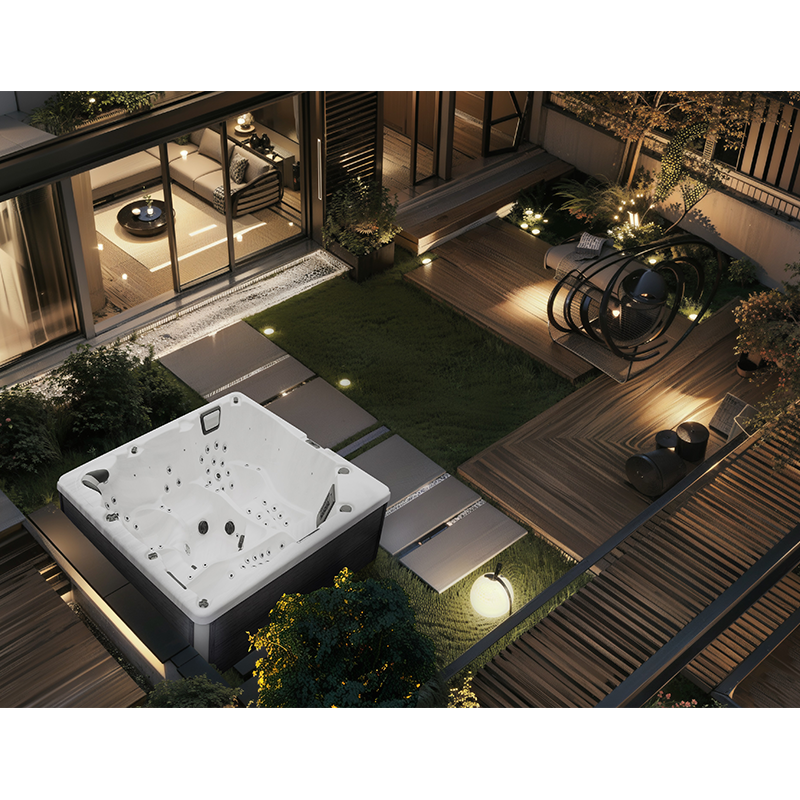
What is the difference between freestanding and other types of bathtubs?
There are significant differences between freestanding hot bathtubs and other types of bathtubs such as embedded bathtubs and portable hot tubs. These differences are not only reflected in the appearance design, but also in many aspects such as function, installation and use experience.
Difference from built-in bathtub
A built-in bathtub usually needs to be installed in a pre-designed groove or frame, and part or all of its edges need to be connected to the ground or wall. When installing a built-in bathtub, certain construction work is usually required, including ground cutting, sewer pipe reservation, etc., while freestanding hot bathtub does not require these complicated installation steps. Freestanding bathtubs can be placed on any flat ground without relying on walls or other fixed structures.
Difference from portable hot tub
Portable hot tubs are usually made of inflatable or lightweight materials and are mainly used for temporary or short-term outdoor activities, such as vacations and camping. They are easy to install and relatively cheap, but they are not as durable, functional and comfortable as freestanding hot bathtubs. The water heating, filtration and massage functions of portable bathtubs are usually basic, while freestanding hot bathtubs provide more powerful hydromassage systems and more advanced water treatment equipment.
What are the advantages of freestanding hot bathtubs?
The reason why freestanding hot bathtubs are becoming more and more popular is mainly due to its many advantages in design aesthetics, user experience, and installation convenience. Here are some of the advantages of a freestanding hot bathtub over other types of bathtubs:
Highly flexible installation
The biggest advantage of a freestanding hot bathtub is its flexible installation. It can be placed on any suitable flat surface indoors, and is even suitable for outdoor installation. Because it does not need to be fixed to the wall or floor, the freestanding hot bathtub can be freely adjusted according to the spatial layout of the room, which is very suitable for users who pursue personalized design.
Beautiful design
The appearance design of the freestanding hot bathtub is very diverse and can be well integrated into different home decoration styles. Whether it is a simple and modern home environment or a retro and luxurious decoration, a freestanding bathtub can become the visual focus of the space. Since its design does not need to be integrated with the wall, manufacturers have more creative space and can make more innovations in shape, material and color.
Comfortable spa experience
Freestanding hot bathtubs are usually equipped with powerful hydromassage functions. The nozzles in the bathtub can be adjusted according to the needs of the user to produce different water flow intensities, help relieve muscle fatigue and joint pain, and provide an excellent spa experience. This feature makes the freestanding hot bathtub not only suitable for daily leisure and relaxation, but also has certain health benefits.
Easy to maintain
Compared to built-in bathtubs, freestanding bathtubs are relatively easy to maintain. Since it does not need to be connected to the wall or the ground, cleaning around the bathtub becomes more convenient. The bottom and sides of the bathtub are also easy to check and repair, saving the construction difficulty and cost that may occur during the bathtub repair process.
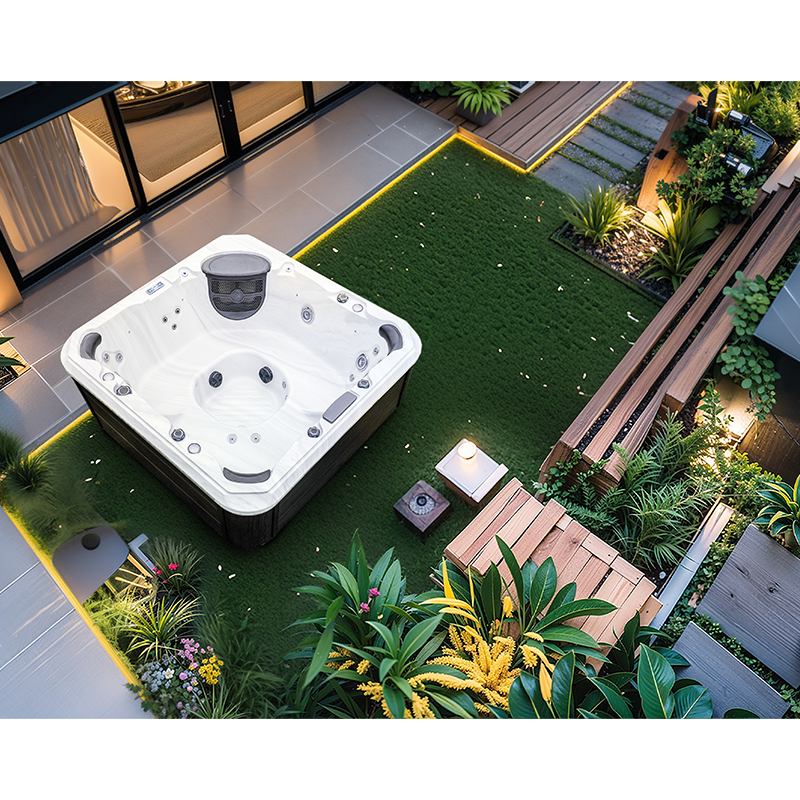
What should I pay attention to when installing a freestanding hot bathtub?
Although the installation of a freestanding hot bathtub is relatively flexible, some important factors still need to be considered in actual operation, especially those involving water pipes, electricity, and ground load-bearing. In order to ensure the long-term use effect and safety of the bathtub, users need to follow certain standards and procedures when installing it.
Ground load-bearing
The freestanding hot bathtub is heavy when filled with water, so the load-bearing capacity of the ground needs to be confirmed during installation. Especially for high-rise residential buildings or rooms with wooden floors, it is necessary to ensure that the ground structure is strong enough to bear the weight of the bathtub. In general, the ground where the hot tub is installed should have the ability to bear at least 500-600 kg per square meter.
Power demand
The heating system and hydromassage function of the hot tub require electricity, so it is necessary to ensure that there is sufficient power supply during installation. At the same time, the power access point should be equipped with a waterproof device to ensure safety during use. It is usually recommended that the power line of the bathtub be installed by a professional electrician in accordance with local electrical standards.
Drainage system
Although the freestanding hot bathtub does not need to be fixed to the drain, an appropriate drainage system must be reserved. The waste water after the bathtub is used needs to be discharged in time to avoid affecting the floor of the room or the outdoor venue. A convenient drainage channel should be set up around the bathtub to ensure smooth water flow and reduce the possibility of blockage.
Anti-slip measures
The ground around the freestanding hot bathtub is usually splashed with water, so anti-slip measures should be considered during installation. You can choose to lay anti-slip mats or use anti-slip floor tiles around the bathtub to avoid accidental falls caused by slippery ground.

How to maintain the freestanding hot bathtub?
In order to ensure the long-term use effect and good function of the freestanding hot bathtub, regular maintenance and care are essential. Here are some key maintenance points:
Regular cleaning
Since the freestanding bathtub is exposed to the air, dust and dirt are easily accumulated inside and outside the bathtub. Users should clean the bathtub regularly, especially after it has not been used for a long time. Cleaning is particularly important. You can use a mild detergent and a soft cloth to wipe the surface of the bathtub, and avoid using strong acidic or alkaline detergents to avoid damaging the surface of the bathtub.
Water quality management
The water quality management of the freestanding hot bathtub is equally important. Especially for bathtubs used outdoors, the water quality is easily affected by environmental factors, so it is necessary to regularly test the chlorine content and pH value in the water to ensure the cleanliness and safety of the water quality. For frequently used bathtubs, it is recommended to change the water every two weeks to avoid bacterial growth in the water.
Nozzle maintenance
The nozzle is an important component of the freestanding hot bathtub to provide hydrotherapy massage. To ensure the normal operation of the nozzle, users should regularly clean the scale and dirt on the nozzle. If the nozzle is blocked or the water is not flowing smoothly, you can use a special nozzle cleaner or a soft brush to clean it.
Can I view your spa products in person or through virtual tours?
While visiting our Guangzhou factory is always welcome, we also offer detailed product videos, 360° virtual tours, and live video calls for buyers abroad. This helps you evaluate product quality before purchasing. Whether you're a new buyer or a returning customer, we make it easy to inspect, compare, and choose with confidence.


